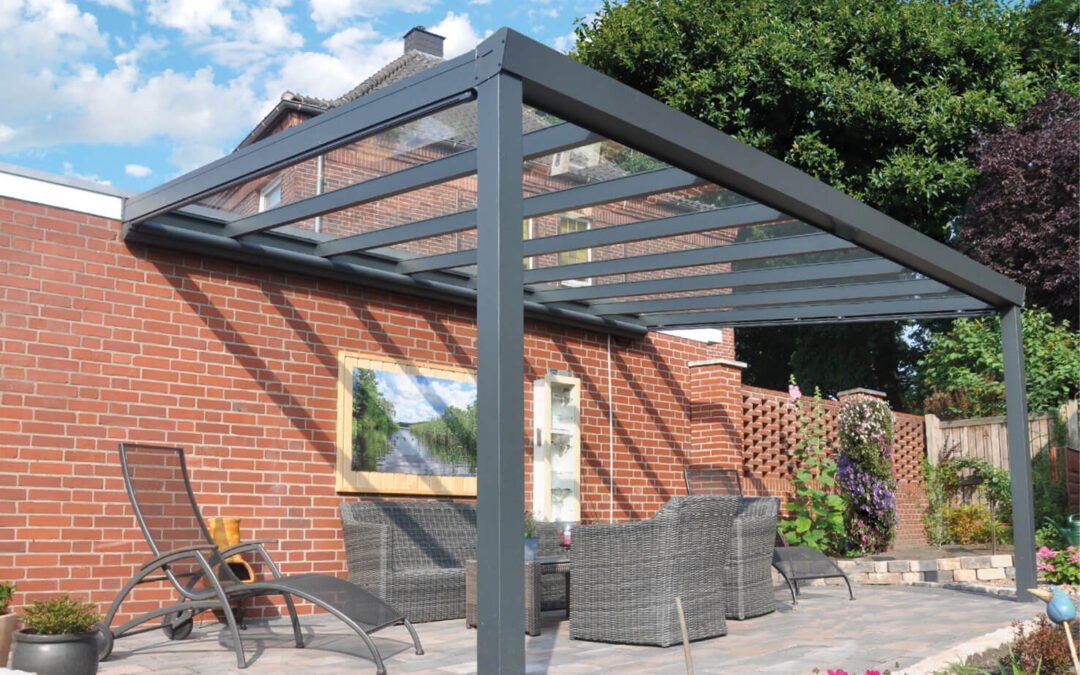Adding a veranda is one of the most effective ways to enhance your home’s appearance, functionality, and value. Whether you’re seeking a shaded corner of the garden, a stylish space for entertaining and outdoor dining or simply want to extend your living space, a veranda can be the perfect solution. But with so many styles, materials, and options available, how do you make the right choice?
This guide will walk you through everything you need to consider when choosing a veranda for your home, from planning and design to installation and functionality.
What is a Veranda?
First let’s start by understanding what a veranda compared to other options. It’s a covered outdoor structure, typically attached to the back or side of a house, offering a sheltered transition between your indoor and outdoor spaces. Unlike a pergola or patio, a veranda provides a roofed, often semi-enclosed area that can be enjoyed in various weather conditions. It is also considerably cheaper compared to a conservatory whilst offering the option for a fully enclosed structure if you opt for glass sides.
In the UK, verandas have grown in popularity as more homeowners look to extend their living space and embrace outdoor living. Whether you opt for a sleek, contemporary aluminium design or a traditional timber frame, a veranda is a great choice to enhance your property.
Assessing Your Needs and Style Requirements
Before diving into materials and design options, it’s essential to think about a few important things that may affect your choice. Here’s a few questions we like to suggest to customers when considering what to go for:
- How are you planning on using your space?
- Are you ok to regularly maintain the veranda such as annually treating the wood or would you prefer a low maintenance option?
- How big do you want the veranda to be? Larger spans tend to be better suited to steel or aluminium.
- What’s the style of your property? Your veranda should complement the architectural character of your home. More traditional looking homes may be better suited to a wooden veranda compared modern properties where a steel or aluminium veranda may look better.
Understanding your needs and lifestyle will help determine the type of veranda you choose and additional options available.
Selecting Materials
The material you choose will affect not just the appearance but also the durability, maintenance, and cost of your veranda. Let’s consider all the pros and cons or each material choice; aluminium, timber, steel and glass.
- Aluminium: Lightweight, rust-resistant, and virtually maintenance-free. Ideal for modern designs and long-term durability.
- Timber: Warm and natural with classic, rustic appeal, however they require regular treatment to prevent weathering and rot.
- Steel: Strong and durable, but needs anti-corrosion treatment. Ideal for larger verandas that need to cover bigger spans.
- Glass (for roofs/sides): Allows maximum light while offering weather protection. Can be paired with other materials for a high-end finish.
When deciding, consider your local climate, how much maintenance you’re prepared to commit to, and the overall aesthetic you’re aiming for.
Size and Layout Considerations
Proportions are key. A veranda should enhance your property, not overwhelm or underwhelm it. Consider the following:
- Size: Is your garden large enough to accommodate the structure without feeling cramped?
- Position: Choose a spot that gets the desired amount of sunlight and offers privacy.
- Orientation: A south-facing veranda gets the most sun, but you may want to incorporate shading solutions.
- Flow: Ensure doors and windows aren’t obstructed and that the space allows for easy movement and furniture placement.
Sketching out a rough plan with furniture and usage zones can be helpful before committing to a final layout.
Roofing and Cover Options
Your choice of roof will impact comfort, aesthetics, and usability.
- Polycarbonate roofing offers UV protection and comes in tinted options to reduce glare.
- Glass roofs provide maximum light but may require blinds to reduce heat.
Each option comes with cost and maintenance considerations. Think about your preferred balance between natural light and shade.
Planning Permissions and Building Regulations (UK)
In many cases, a veranda can be built under permitted development rights, but there are exceptions:
- If the veranda is too large or close to boundaries.
- If your home is listed or in a conservation area.
- If you want enclosed sides or walls.
You should always check with your local council or a professional installer to ensure compliance.
Budgeting and Long-Term Value
Verandas vary greatly in cost, from simple models under £5,000 to high-end bespoke builds over £20,000. Several factors can affect the cost including:
- Size
- Materials
- Roof type
- Installation complexity
- Optional extras (heating, lighting, glass walls)
While the upfront cost can be significant, a well-designed veranda adds real value to your property—potentially increasing resale value by 5–10%.
Choosing the Right Installer
Don’t underestimate the importance of a skilled and reputable veranda supplier. Look for:
- Portfolio of completed projects
- Reviews and testimonials
- Certifications or trade body memberships
- Guarantees or warranties
An experienced team like Verandaluxe will guide you through design, permissions, and installation, ensuring a smooth process and high-quality outcome.
Choosing the perfect veranda is about more than picking a style. It requires careful consideration of your lifestyle, home design, local regulations, and long-term value. By following the steps in this guide, you’ll be well-equipped to create a veranda that not only enhances your property but also your daily life.
Whether you’re after a sleek aluminium structure for modern living or a timeless timber veranda for a classic home, Verandaluxe offers bespoke solutions tailored to your vision.
Ready to transform your outdoor space? Contact Verandaluxe today for expert guidance and a free, no-obligation quote.

